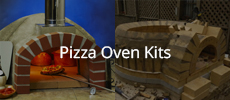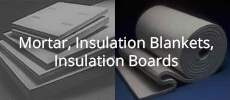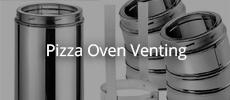X
-
Why don't you look a the build thread by Nick JC, he did a really nice cast oven and is from the UK. His build my give you some insight to design, materials, etc for the UK.
-
Well my progress has slowed to a crawl now that the oven is functional. It doesn't help that then we had my sons birthday a holiday and then my birthday. So it has been a busy few weeks any way. I had my chef friend over on Sunday and we cooked up another batch of the salt and vinegar chicken wings. I think this batch was even better than the first. We also did a pan of roasted baby potatoes and and some Tomahawk's. I have been dreaming of making some of these again for like the last 5 plus years. They were probably on the order of 2.5" thick and weighed roughly 2.5# each. They tasted just as awesome as I remember from last time. What I had forgotten about is the mess it makes. I only did one last time so maybe that has something to do with it,but at one point I had the entire floor of the oven involved in a grease fire. Other than that it was great. I will need to pull the coles out to the entry next time to burn the rest of the grease off but that is what these ovens are for. I am super happy with the performance of the oven so far. It has worked as expected or better.
I also finally got around to insulation of the Govee string light 2 that I bought a few weeks ago. I am truly impressed with how much light they put out. In white mode you could probably read at night on the deck. They also light up most of the yard. In color mode they have lots of very bright and intense colors. The app controller works great. So far I would definitely recommend them and once the pavilion cover is built I may consider getting more of them.
Randy
Leave a comment:
-
Russell, reading what you guys have done makes that clear to me now. More wary of YT now haha
Mike, it was a great explanation. The link you sent was also particularly good. Some golden nuggets of information from you all
The only downside will be that the weather in the UK is let's say unpredictable sometimes, so will mean I won't always be out in the garden firing the thing up!
Leave a comment:
-
The mosaic tiles are only intended for underneath the oven, separating the concrete top slab from the bottom insulation (board or insulated concrete). Most builders consider adding a small vent for the upper dome that leads into the chimney area or is placed near the top of the oven giving any steam/moisture an escape route. This vent doesn't need to be large, just so it penetrates any outside shell of the oven and doesn't allow water a path in. In the US, there are a variety of small vented plugs used in the automobile industry called Breather Caps that work well for our oven builds. You can also make one out of some piping connections to simply provide a path out, but not in (upside down "U" shape with a longer end reaching into the insulation layer).Last edited by SableSprings; 07-17-2024, 02:39 PM.
Leave a comment:
-
Two more questions that came up during preparations for the work after:- Under which layers should I put the mosaic tiles? as they are there to protect 'wicking' insulation materials from water, I'm assuming they should also be under the fire blankets and possibly also the vermiculite stucco?
- I did some calculations on the side thrust of the chimney, and were the side walls freestanding, they would definitely topple. However, they're partly embedded in the stucco, and will also be attached to the stone floor (which consists of loose stones basically). I'll probably put in a buttress, as depicted in the picture below, but would welcome any comments/remarks about people's experience with similar arches.
Ie. with some of the casted chimneys I would imagine that they also take up the side thrust, that might be a solution I could also consider. The buttress I'm currently planning is also only supporting the side walls on the 'back'. I'm assuming that the walls are sufficiently short/stiff that this will basically support the whole sidewall, but also here: any experience/knowledge is welcome!2 Photos
Leave a comment:
-
You can use duct tape to help control the cut edges (it's difficult to paint Redgard on a crumbly, dry edge). In wet climates, #1 option to keep oven insulation dry is to build an enclosure/cover over the oven. Not always possible or desired. #2 option, Currently, we advise 3-5 weep holes through the support slab and then laying porcelain/glass mosaic tile sheets (mesh side up) on top of that slab. Your oven base insulation board is then placed on top of the tiles. Building your oven on top of this system allows moisture an escape path as well as an initial barrier to moisture seeping or wicking into the board. Hope that makes sense. If you can, putting a slight dome to your slab pour will encourage water to flow away instead of pooling on top.
Lots of advantages to the covered patio enclosure approach... it's nice to be able to use the oven year round! Last edited by SableSprings; 07-17-2024, 08:40 AM.
Last edited by SableSprings; 07-17-2024, 08:40 AM.
Leave a comment:
-
Dogshark58 Build
For a setup like yours, consider using durable materials like stainless steel for appliances and countertops. Also, ensure you have proper ventilation and weather protection, especially for your barbecue and wok burner. For the seating area, comfortable and weather-resistant furniture will enhance the overall experience. You might also want to integrate some lighting and heating options to make the space usable year-round.
Tags: None





Leave a comment: